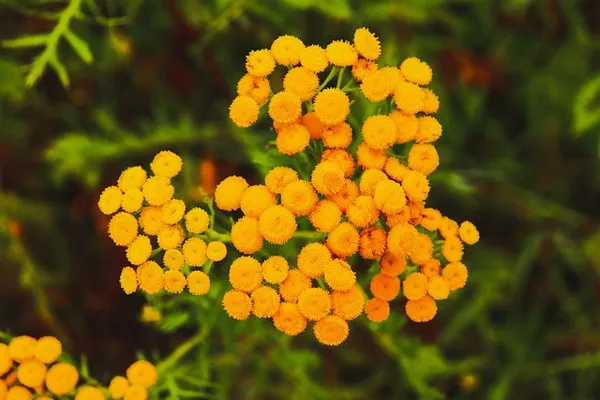Maintaining healthy, thriving plants requires regular care and attention. However, life often throws us situations where we need to leave our green companions unattended for a while. Whether it’s a short weekend getaway or an extended vacation, the question remains: How do you water plants effectively when you’re away? In this article, we will explore various methods and techniques to ensure your plants receive the proper care and hydration they need, even in your absence.
Choose Low-Maintenance Plants
Before planning a trip, it’s essential to consider the types of plants you have. Selecting low-maintenance plants can significantly reduce the need for constant watering while you’re away. Succulents, snake plants, and certain types of cacti are excellent choices as they store water in their leaves or stems, allowing them to survive longer without frequent watering. Before you go on vacation, you can also group plants with similar watering needs together, making it easier to care for them collectively.
Water Thoroughly Before Leaving
A crucial step before leaving for your vacation is to ensure your plants are well-hydrated. Water them thoroughly a day or two before your departure to ensure the soil is evenly moist. This pre-vacation watering will provide your plants with a reserve of moisture to draw from while you’re away. Be careful not to overwater, as this can lead to root rot or other issues. Use your finger or a moisture meter to gauge the soil’s moisture level.
Self-Watering Planters
Self-watering planters are a lifesaver for plant owners who frequently travel. These planters are equipped with a built-in reservoir that allows the plant to draw water as needed. The water slowly seeps into the soil, providing consistent moisture over an extended period. You can find self-watering planters in various styles and sizes to accommodate different types of plants. Ensure that the reservoir is filled to capacity before leaving to maximize their effectiveness.
DIY Watering Solutions
If you don’t have access to self-watering planters, you can create your DIY watering system using readily available materials. One simple method is to use a plastic bottle as a makeshift drip irrigator. Fill the bottle with water, and then make a small hole in the cap. Insert the bottle upside down into the soil near the base of the plant. As the soil dries out, water will slowly release through the hole, keeping the soil consistently moist. The rate of water flow can be adjusted by varying the size of the hole.
Another DIY solution involves using cotton or nylon string as a wicking system. Place one end of the string in a container of water and bury the other end in the plant’s soil. The string will draw water from the container and deliver it to the roots, ensuring the plant receives a steady supply of moisture.
Grouping Plants Together
Grouping your plants together before leaving for vacation can create a microclimate that helps them retain moisture. When placed close together, plants can create a slightly more humid environment, reducing water loss through transpiration. However, be cautious not to overcrowd them, as this can lead to increased humidity, which might encourage mold or other problems.
Shade and Reduce Light Exposure
During your absence, it’s crucial to minimize the amount of direct sunlight your plants receive, as excessive heat can lead to increased water evaporation. Move your plants to a shadier spot, away from direct sunlight, or draw your curtains or blinds to reduce light exposure. You can also consider using sheer curtains to filter and diffuse sunlight, maintaining a stable indoor environment for your plants.
Use Watering Globes or Spikes
Watering globes or spikes are convenient tools that can help you keep your plants hydrated while you’re away. These devices consist of a hollow glass or plastic globe that you fill with water and then insert into the soil. As the soil dries out, air is drawn into the globe, releasing water gradually to the plant’s roots. Watering spikes work on a similar principle, but they are typically made of porous ceramic or terracotta.
Hire a Plant Sitter
If you have a considerable collection of plants that require specific care, hiring a plant sitter can be an excellent option. A knowledgeable plant sitter can ensure your plants receive the individualized care they need, including watering, pruning, and monitoring for any signs of pests or disease. Make sure to provide clear instructions and contact information in case any issues arise during your absence.
Limit Fertilization Before Vacation
Reducing fertilization before your vacation can help your plants conserve water. Fertilizers promote growth, which in turn increases the plant’s water requirements. Scale back on fertilizing a few weeks before your departure to slow down growth and reduce the need for additional moisture.
Test Run Your Watering System
Before embarking on your vacation, it’s essential to test any automated watering systems or DIY solutions you’ve set up. Ensure that the chosen method is delivering water as intended and that the soil moisture remains within the appropriate range. This precaution can help you identify and address any issues before they become critical.
Conclusion
Caring for your plants while on vacation doesn’t have to be a daunting task. By choosing low-maintenance plants, preparing them properly before your departure, and utilizing self-watering systems or DIY solutions, you can ensure your green companions remain healthy and hydrated in your absence. Whether you prefer a hands-on approach or enlist the help of a plant sitter, planning ahead and providing consistent care can help you enjoy your vacation without worrying about the well-being of your beloved plants. Remember that each plant is unique, so understanding its specific watering needs is the key to successful plant care during your time away.


